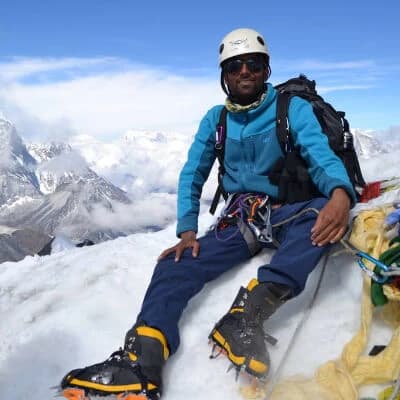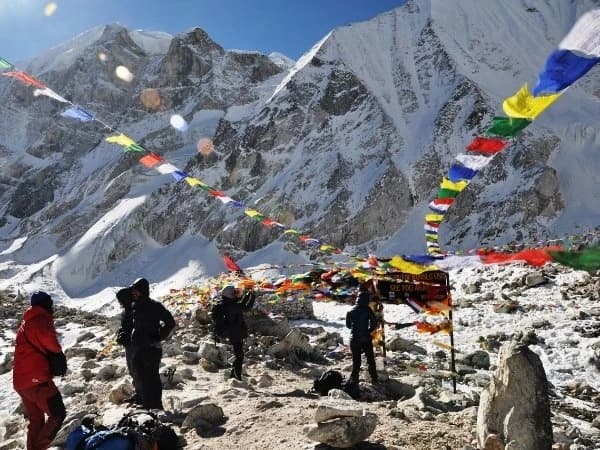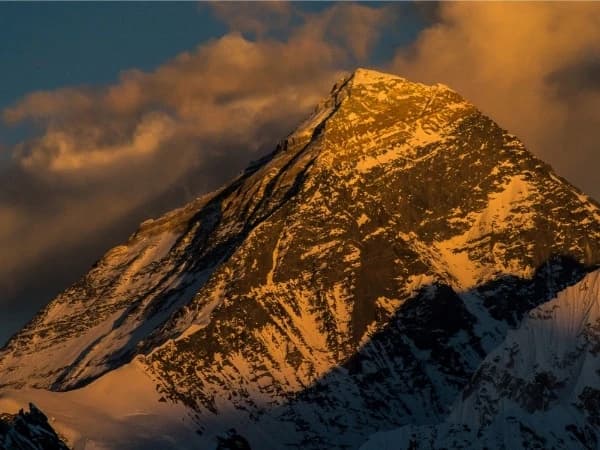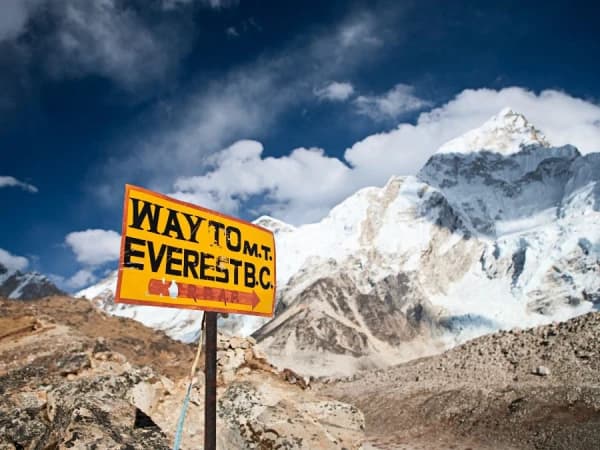Annapurna Circuit Trek Itinerary Plan at a Glance
Before diving into the day-by-day details of the Annapurna Circuit Trek itinerary, here is a quick overview to help you understand the core structure of the journey. Understanding these factors is essential whether you are planning a shorter version or a full circuit trek.
|
Trek Info
|
Details
|
|
Duration
|
10 to 16 days (customizable on pace, side trips and acclimatization period)
|
|
Maximum Altitude
|
Thorong La Pass (5,416m/ 17,770ft)
|
|
Starting Point
|
Besisahar (760m/ 2,493ft) or Dharapani (1,860m/ 6,102ft) (for shorter version)
|
|
Difficulty
|
Moderate Level
|
|
Best Time to Go
|
Spring (March to May) and Autumn (September to November)
|
|
Necessary Permits
|
- Annapurna Conservation Area Permit (ACAP)
- Trekker’s Information Management System (TIMS) Card
|
Annapurna Circuit Trek Detailed ItineraryRecommended Itinerary Plan
With multiple routes, side trips and pacing options, planning for the Annapurna Circuit Trek in Nepal can feel overwhelming. That’s why having a reliable and well-tested itinerary is the key to success. Especially so, if you want to make the most out of your time without compromising on the experience or safety.
This is Recreation Holiday’s Annapurna Circuit Trek Itinerary 10 Days, which offers a smart and practical approach to this thrilling circuit trek route. Our itinerary plan cuts off unnecessary detours, optimizes altitude properly and covers the major highlights along the trail.
We have deigned this 10 Days Annapurna Circuit Trek Itinerary for the trekking enthusiasts who are short on time but still want to experience a rewarding high-altitude adventure. This version delivers a complete circuit experience in a compact form.
Day 01: Drive from Kathmandu to Dharapani
Kathmandu Elevation: 1,345m/ 4,412ft
Dharapani Elevation: 1,860m/ 6,102ft
Altitude Gain: 515m/ 1,689ft
Drive Duration: 8 to 9 hours
Your Annapurna Circuit Trek itinerary kicks off with an early morning drive from the hustle and bustle of Kathmandu Valley. Following the Prithvi Highway, you will drive past the rolling hills, riverside settlements and deep gorges of the Marsyangdi Valley.
The drive then passes peaceful rural settlements of Mugling and Besisahar. Air starts to get fresher as the pine forest starts to replace the subtropical terrain. And, you will ascend through Jagat and Tal Villages before arriving at Dharapani.

Day 02: Trekking from Dharapani to Chame
Chame Elevation: 2,610m/ 5,282ft
Elevation Gain: 750m/ 2,460ft
Trek Duration: 5 to 6 hours
Leaving the cozy atmosphere of Dharapani, you will follow the Marsyangdi River upstream and push for Bagarchhap Village. Continuing further on the trail leads to Danakyu Village and then to Timang Village.
Moving past Timang, the path becomes less steep and you will cross a wide forested slope to reach Thanchok Village. During the final stretch, you will walk across a suspension bridge to arrive at your destination, Chame Village.

Day 03: Chame to Pisang
Pisang Elevation: 3,300m/ 10,826ft
Elevation Gain: 690m/ 2,263ft
Trek Duration: 5 to 6 hours
This day’s Annapurna Circuit Trek itinerary 10 days, ventures deeper into the heart of the Annapurna region. Walking past the fragrant pine forests, you will head toward Paungda Danda. Soon, you will cross a thrilling suspension bridge to reach Bhratang Village.
Then, a series of switchbacks takes you to Dhikur Pokhara, which rewards you with wide vistas of Annapurna II and Pisang Peak. From here, the path gradually flattens and you will reach Pisang.

Day 04: Trek from Pisang to Manang
Manang Elevation: 3,540m/ 11,614ft
Elevation Gain: 240m/ 787ft
Trek Duration: 6 to 7 hours
Climbing steadily from Upper Pisang, the trekking trail takes you across Ghyaru Village. Moving forward, the trail is gentler and you will reach another picturesque village, Ngawal. Trekking past Ngawal, you will descend and join the main trail near Braga Village.
This village has a major spiritual relic, Braga Monastery, which is believed to be more than 500 years old. Then, the final stretch from here to Manang is relatively flat and leisurely.

Day 05: Acclimatization and exploration day in Manang
Manang Elevation: 3,540m/ 11,614ft
On this acclimatization day, you can hike to Gangapurna Lake. Likewise, Praken Gompa is another excellent hiking option. Whatever you choose, this day is essential to prepare your body for the steep ascent across Thorong La Pass.

Day 06: Trek from Manang to Yak Kharka
Yak Kharka Elevation: 4,060m/ 13,320ft
Elevation Gain: 520m/ 1,706ft
Trek Duration: 2 to 3 hours
Today’s trek on your Annapurna Circuit Trek itinerary is designed shorter to aid the acclimatization process. Leaving the bustle of Manang, you will follow the northward trail alongside Jarsang Khola.
The path gently rises across Tengi Village and you will continue to walk on the alpine ridges and open meadows. After crossing a few wooden bridges and navigating the landslide-prone slopes, you arrive at Yak Kharka.

Day 07: Yak Kharka to Thorong Phedi
Thorong Phedi Elevation: 4,525m/ 14,845ft
Elevation Gain: 465m/ 1,525ft
Trek Duration: 4 to 5 hours
Leaving Yak Kharka, the trail continues to climb gently toward Ledar Village. Crossing a wooden bridge up ahead over Jarsang Khola, you will head toward a steep section perched on the cliff.
With care and patience, you will continue walking on the steep stretch before finally arriving at Thorong Phedi. This is a barren outpost that is situated right beneath the Thorong La Pass.

Day 08: Trek to Muktinath across Thorong La Pass
Muktinath Elevation: 3,800m/ 12,467ft
Thorong La Pass Elevation: 5,416m/ 17,769ft
Elevation Gain: 891m/ 2,923ft
Trek Duration: 7 to 8 hours
This is the biggest and most challenging day of your Annapurna Circuit Trek itinerary. Your journey starts pre-dawn with your headlamp lighting the way. The climb to the top of the pass is relentless; the frozen stream and prayer flags will mark your progress.
Then, after a few hours, you will reach the top of Thorong La Pass, the highest point of the Annapurna Circuit Trek. After soaking in the views, you will then make a descent toward Muktyinatrh, passing Chabarbu and Lower Phedi.

Day 09: Drive from Muktinath to Pokhara
Pokhara Elevation: 827m/ 2,713ft
Elevation Loss: 2,973m/ 9,753ft
Drive Duration: 8 to 9 hours
After completing your circumnavigating journey, from Muktinath, a 4WD takes you across a rough and scenic landscape to Jharkot and Kagbeni. You will then soon reach Jomsom and then the drive continues past Marpha.

From here, the driving road takes you across charming settlements of Kobang, Kalopani and Tatopani. During the final stretch, the lush hills of Beni Village will lead you to the paradise of lakes, Pokhara.

Day 10: Drive back to Kathmandu from Pokhara
Kathmandu Elevation: 1,345m/ 4,412ft
Elevation Gain: 518m/ 1,699ft
Drive Duration: 6 to 7 hours
This is the final day of the return journey to the capital valley, where it all began. The drive from Pokhara to Kathmandu retraces Prithvi Highway. You will drive past lush hills, soaring rivers and beautiful villages that define rural Nepal.
After your arrival at the vibrant, colorful capital, a swift airport transfer will follow. This day’s atmosphere is a stark contrast to the high mountain silence you are used to. But there is comfort in returning to the modern world.

Ideal Timeframe: When to Plan This Itinerary?
The Annapurna Circuit Trek is a high-altitude endeavor that passes across a diverse range of climatic zones, from subtropical forest to alpine desert and snow-covered Himalayan passes. Thus, timing your journey is crucial not just for safety, but also to experience the best this journey has to offer.
There are two seasons that are considered the ultimate and best time for Annapurna Circuit Trek: spring (March to May) and autumn (September to November). Autumn is the most popular season for Himalayan treks in Nepal.
This post-monsoon season has the clearest skies, jaw-dropping mountain vistas, comfortable trekking trails, just-right temperatures and a festive atmosphere. Spring is also another excellent time to make the best out of the Annapurna Circuit Trek itinerary 10 days.
Spring, known as nature’s season, brings warm temperatures, blooming rhododendron forests, highly active Himalayan flora and fauna, stable trails and less crowded routes. As the landscape is alive with a diverse splashes of colors, every turn unveils a magical Himalayan landscape
When to Avoid?
If you are a beginner trekker and don’t want to go through the hassle of dealing with an extra layer of weather-related difficulty, it is best to avoid winter (December to February) and monsoon (June to August).
The trail can be muddy and slippery during the monsoon. Leeches are also rampant in the lower forests. Heavy rainfall also causes landslides and flooding. Views of the mountain are often shrouded in clouds and flights or drives can be delayed or cancelled due to weather disruptions.
Similarly, the lower part of the trail remains open in winter, but the higher region and Thorong La Pass are often blocked with heavy snow. Trekkers also need to prepare for extreme levels, which even complicates the acclimatization process. The teahouses at high elevation also remain closed during winter.
**Note: Aim your trek for peak seasons, these windows offer the best blend of visibility, stable weather and trail conditions with incredible natural and cultural allure**
Important Notes on Itinerary Customization
Although you will move along with the trekking plans mentioned in the Annapurna Circuit Trek detailed itinerary section, it is still flexible. Even if the journey in overall is well-paced, you can adjust the itinerary plans based on your fitness level, interest in side extensions, or time constraints.
You can extend this circuit trekking experience with exploration of Tilicho Lake or the Nar Phu Valley Trek. It is possible for you to trek from Muktinath or Jomsom to Tatopani across the scenic Himalayan landscape rather than driving.
In case if you are short on time, it is possible to include a flight in this experience from and to Jomsom. For the trekkers who are traveling with families or diverse age groups, there is also flexibility in the acclimatization period, walking pace and rest stops.
You can spend extra days for acclimatization and shorten each day’s trek distance. Similarly, you also have flexibility over the number of guides and porters, and how you want to enjoy this Himalayan experience (i.e., guided trek or independent trek).
Suggested Packing List
Remember, following through the Annapurna Circuit Trek length and elevation is not just about chasing the panoramic views or traversing high mountain passes. It is also about living and breathing in a different dimension that shifts dramatically with every hour.
Over the 10 days, you will pass through steaming river valleys, crisp forests, dry alpine deserts and snow-dusted high passes. That means you will need the right gear to be as adaptable as the trail itself. The packing for Annapurna Circuit Trek is all about balance.
This is our suggested packing list that focuses on real-world needs, how to keep yourself warm and manage energy on long days while keeping pack weight light and flexible for unpredictable mountain factors.
Clothing
- Base layers (moisture-wicking)
- Long-sleeved thermal tops
- Thermal leggings for sleeping and layering
- Fleece or lightweight jacket
- Heavy down jacket for high altitudes
- Waterproof rain jacket and trekking pants
- Quick-dry hiking pants
- Trekking shorts (optional)
- Comfortable undergarments for different altitudes
Footwear
- Comfortable and broken-in trekking boots (high-ankle support)
- Sports shoes for short hikes
- Lightweight camp shoes or sandals
- Gaiters (optional)
- Several pairs of moisture-wicking hiking socks
- Thermal or insulated pair of socks for nights and higher altitudes
Accessories and Headwear
- Sun hat or wide-brim hat
- Woolen or insulated beanie
- Buff or neck gaiter
- Lightweight gloves and insulated gloves
- Sunglasses with UV protection
Trekking Gear
- Duffel bag
- Trekking backpack
- A rain cover for a backpack
- Dry sacks or zip log bags
- Four-season sleeping bag (rated for comfort and at least -15°C )
- Water bottle or hydration bladder
- Headlamp or torch (do not forget an extra pair of batteries)
- Powerbank
- Universal adapter
- Map and navigation divides
- Lightweight trekking poles
- Swiss knife or multi-tool
- Thermos
- Small lock for the backpack and the teahouse door
Toiletries and Personal Hygiene
- Toothbrush and toothpaste
- Quick-dry towel and biodegradable soap
- Hand sanitizer
- Quick-dry towel
- Lip balm and sunscreen cream with SPF
- Toilet paper, tissue paper and wet wipes
- Small first aid box
- Personal medication, if any
- Water purification table or SteriPEN
- Female hygiene products
Who is This Itinerary Ideal for?
This 10-day itinerary plan is ideal for trekking enthusiasts who are looking for a well-paced and most practical version of the classic route. With this route plan, you will be able to immerse yourself in the Annapurna region’s geographical variety and cultural richness without having to arrange three full weeks on the trail.
Those who are looking for a fully guided journey or want to add sightseeing days in the trek can go for the Annapurna Circuit Trek 12 Days itinerary alternative. In general, the 10-day plan is suitable for a wide range of trekkers who have moderate fitness and understanding of the high-altitude and remote conditions.
- Trekkers With Limited Time: If you want to completely experience the Annapurna circuit but can’t commit to 1the 8-21 day version, this compressed 10-day adventure is a great fit.
- First-time High-altitude Trekkers: This itinerary plan includes essential acclimatization at Manang and shorter trekking days at higher elevations, which helps with a gradual buildup in altitude. Thus, it is a solid option for those who are doing their first serious trek above 4,000 meters.
- Trekkers Interested in Both Scenery and Culture: From the Hindu culture-influenced lowlands to Tibetan-style villages at higher altitudes, this itinerary offers a cross-section of Nepal’s cultural and spiritual landscape.
- Physically Prepared but Not Seeking a Technical Climb: You don’t need mountaineering skills to join this trek. With good cardiovascular fitness, mental endurance and strength to walk multiple hours in rugged mountain terrain, you can complete this trek with ease.
- Budget-conscious Travelers Seeking Value: This 10-day itinerary plan gives high-altitude exposure and a diverse landscape at a very reasonable price. There is no need for domestic flights and accommodation and food are affordable. The overland nature of the trek keeps expenses lower than fly-in and fly-out routes.
- Adventure Seekers Who Want Terrain Variety: You will traverse across lush forest, steep river gorges, alpine pastures, high desert plateaus and snowy mountain passes, all in one single continuous trek.
- Travelers Looking for an alternative to Everest Region Treks: If you are seeking something equally scenic as the EBC Trek but with fewer crowds and commercialized routes, this itinerary delivers it. This journey offers quieter and more personale experience, especially after crossing manang.
















